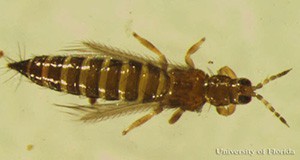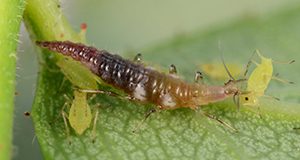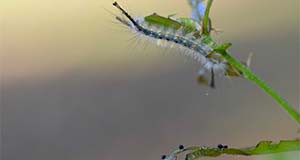Pest control professionals and homeowners throughout Florida and the southeastern US are seeking effective options that are safer for people and the environment than some conventional synthetic pesticides. There is also rising interest in organic gardening, which relies on natural pesticides. This 13-page fact sheet describes natural products for use in residential landscapes and gardens. Written by Matthew A. Borden, Eileen A. Buss, Sydney G. Park Brown, and Adam G. Dale, and published by the UF/IFAS Department of Entomology and Nematology, revised September 2018.
http://edis.ifas.ufl.edu/in197
Tag: Landscape Pests
Landscape Integrated Pest Management
Every landscape manager has a pest management toolbox, which contains tools that represent different management strategies. People can be quick to use pesticides, but an integrated approach using multiple tools can be much safer, have longer lasting beneficial effects, and in some cases cut costs. This 5-page fact sheet will help Extension agents and specialists, lawn and landscape managers, Florida Master Gardeners, and homeowners develop long-term sustainable pest management programs using an Integrated Pest Management (IPM) framework. Written by Adam G. Dale and published by the Department of Entomology and Nematology.
http://edis.ifas.ufl.edu/in109
Pest Identification Guide: An Introduction to Thrips
 Tiny insects called thrips are difficult to see with the unaided eye but cause very obvious and sometimes ruinous damage to the flowers, buds, and fruit of many important crops. This two-page guide asks and answers the key thrips questions that allow growers to distinguish between chilli thrips, common blossom thrips, and Western flower thrips to more effectively battle against these destructive pests. What does it look like? What is its life cycle? Where is it found? What type of damage does it cause? And, most importantly, who are its natural enemies? Use this guide to help you identify thrips so that you can take effective steps to control them and limit the damage they cause. Written by Nicole Casuso and Hugh Smith with photos by Lyle Buss, Jeff Cluever, Vivek Kumar, P.M.J. Ramakers, Gary Vallad, and Hugh Smith. Published by the Entomology and Nematology Department, UF/IFAS Extension.
Tiny insects called thrips are difficult to see with the unaided eye but cause very obvious and sometimes ruinous damage to the flowers, buds, and fruit of many important crops. This two-page guide asks and answers the key thrips questions that allow growers to distinguish between chilli thrips, common blossom thrips, and Western flower thrips to more effectively battle against these destructive pests. What does it look like? What is its life cycle? Where is it found? What type of damage does it cause? And, most importantly, who are its natural enemies? Use this guide to help you identify thrips so that you can take effective steps to control them and limit the damage they cause. Written by Nicole Casuso and Hugh Smith with photos by Lyle Buss, Jeff Cluever, Vivek Kumar, P.M.J. Ramakers, Gary Vallad, and Hugh Smith. Published by the Entomology and Nematology Department, UF/IFAS Extension.
http://edis.ifas.ufl.edu/in1058
Whiteflies on Landscape Ornamentals (ENY317/MG254)
 Whiteflies are common pests on many ornamental plants. Some of the most economically important species in Florida are the silverleaf whitefly, fig or ficus whitefly, citrus whitefly, and the rugose spiraling whitefly. The most frequently attacked plants include allamanda, avocado, chinaberry, citrus, fig, fringe tree, gardenia, gumbo limbo, ligustrum, mango, various palms, persimmon, viburnum, and many annuals. This 4-page fact sheet was written by E. A. Buss, and published by the UF Department of Entomology and Nematology, March 2013.
Whiteflies are common pests on many ornamental plants. Some of the most economically important species in Florida are the silverleaf whitefly, fig or ficus whitefly, citrus whitefly, and the rugose spiraling whitefly. The most frequently attacked plants include allamanda, avocado, chinaberry, citrus, fig, fringe tree, gardenia, gumbo limbo, ligustrum, mango, various palms, persimmon, viburnum, and many annuals. This 4-page fact sheet was written by E. A. Buss, and published by the UF Department of Entomology and Nematology, March 2013.
http://edis.ifas.ufl.edu/mg254
HS1137/HS391 Laurel Wilt: A Threat to Redbay, Avocado and Related Trees in Urban and Rural Landscapes
HS-1137, a 6-page illustrated fact sheet by Albert E. Mayfield III, Jonathan H. Crane and Jason A. Smith, describes for homeowners this fungal disease of trees in the laurel family that is carried by the non-native redbay ambrosia beetle. Includes descriptions of the beetles, plant hosts, impact, host symptoms, and management strategies. Includes references. Published by the UF Horticultural Sciences Department, March 2008.
http://edis.ifas.ufl.edu/HS391

